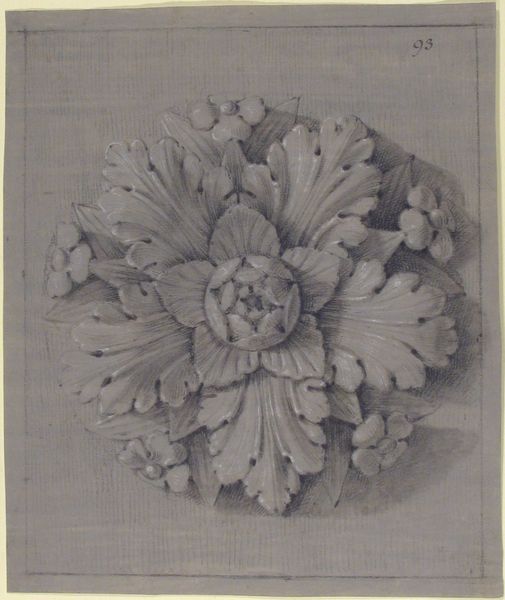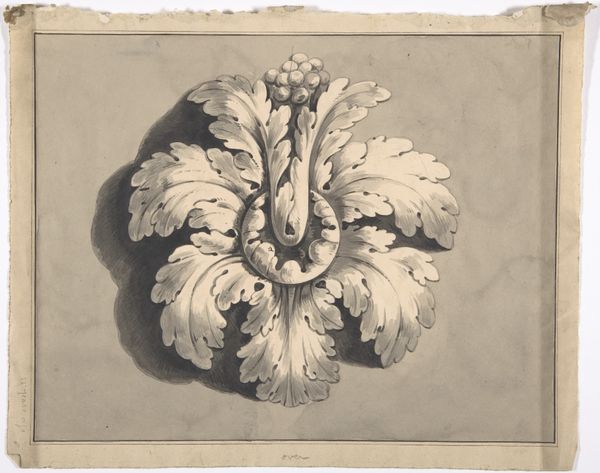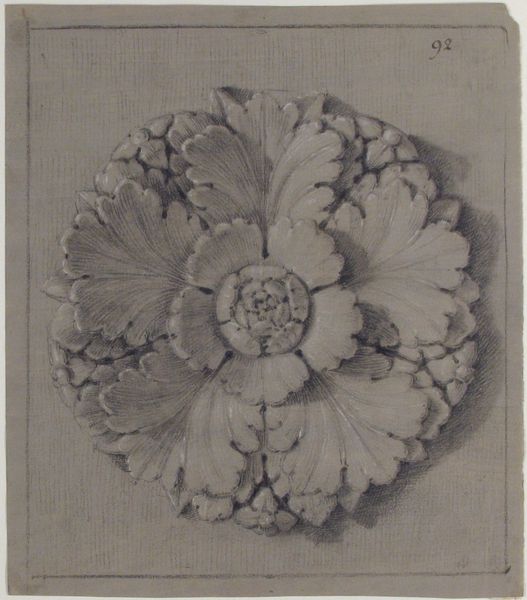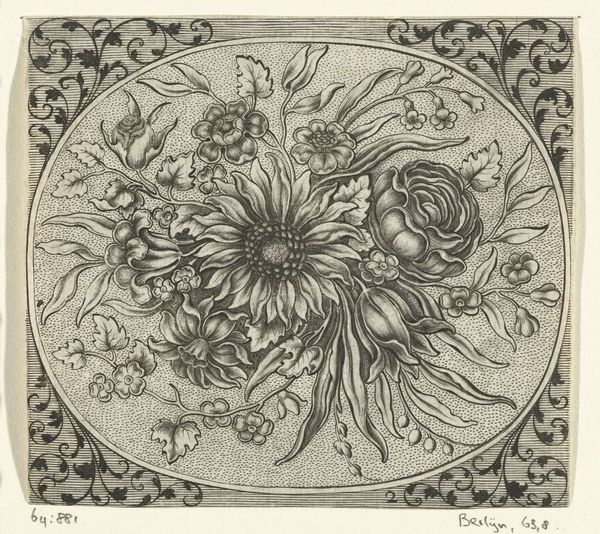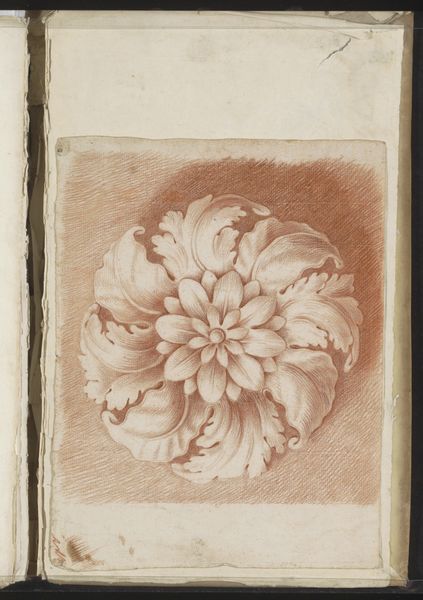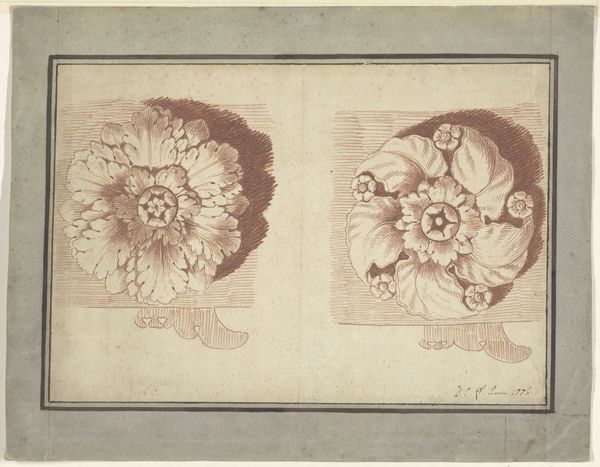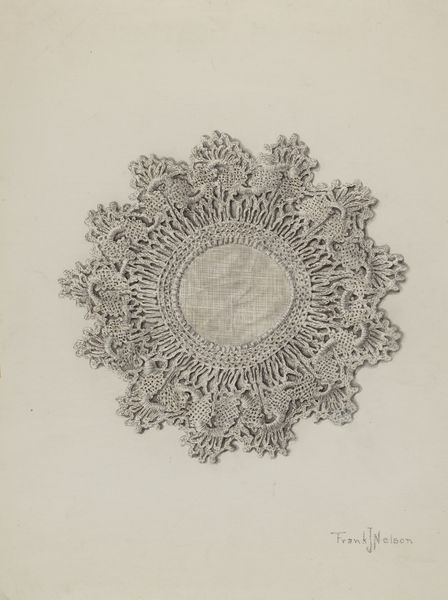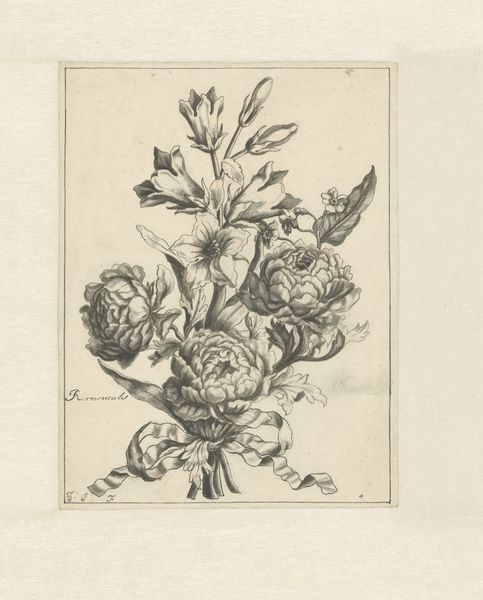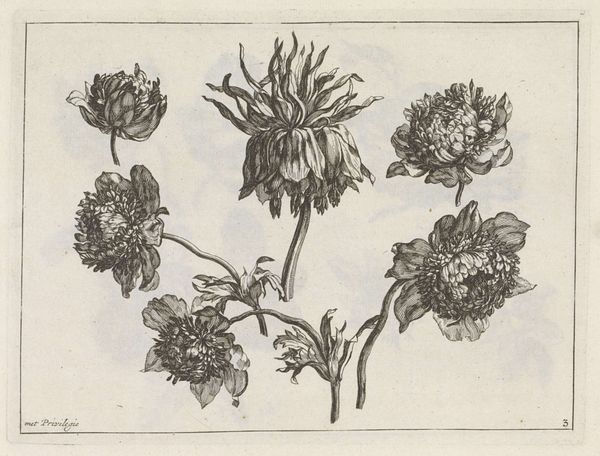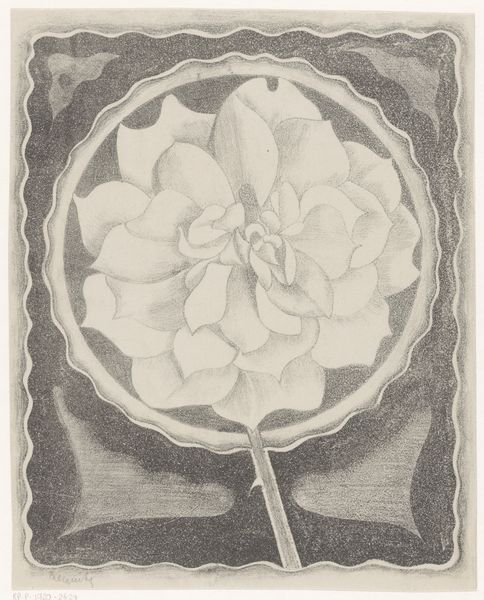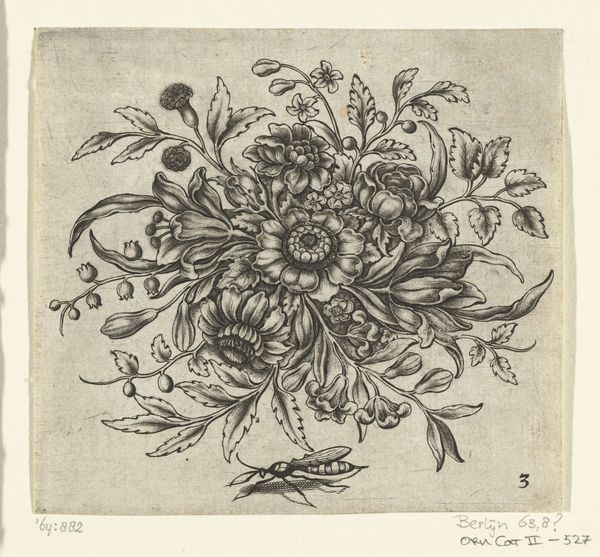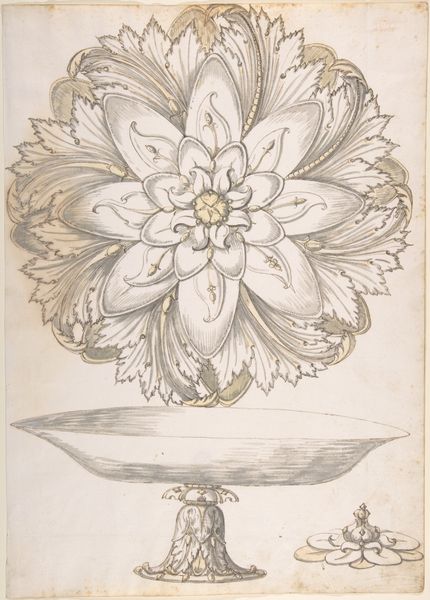
drawing, print, pencil
#
drawing
#
neoclacissism
# print
#
pencil drawing
#
geometric
#
pencil
Copyright: Public Domain
This is a drawing by Thomas Hardwick, made sometime before 1829, depicting a classical rosette. It is rendered with graphite on paper, a traditional medium for architectural studies. What makes this more than just a drawing is the way Hardwick has translated the qualities of carved stone into two dimensions. Notice the delicate gradations of light and shadow, and the way he’s captured the texture and depth of the acanthus leaves. This isn’t just a flat representation; it’s an attempt to understand the three-dimensional form, and the way that light plays across its surface. Hardwick was an architect, and drawings like this were essential to his practice. They were a way of studying classical motifs, and adapting them for use in contemporary buildings. This drawing offers a glimpse into the labor-intensive process by which architectural knowledge was transmitted and adapted. It shows the close relationship between drawing and making, between the hand of the artist and the hand of the craftsman. By valuing the labor and knowledge embedded in this seemingly simple study, we can start to understand the broader cultural and social context in which it was made.
Comments
No comments
Be the first to comment and join the conversation on the ultimate creative platform.

